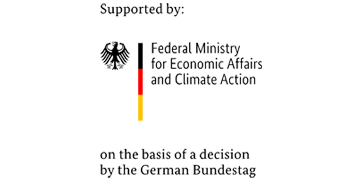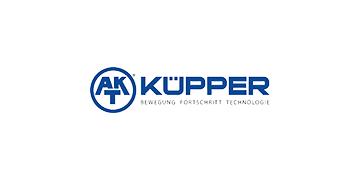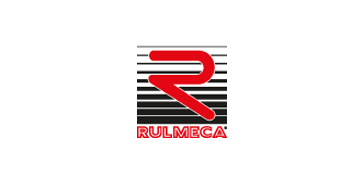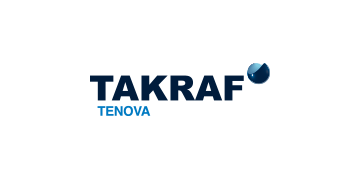| Theme | Industry 4.0 |
|---|---|
| Project title | Practical characterization of the running behavior of driven and conventional bearing idlers for (bulk) conveying systems (EiLaT) |
| Project duration | 01.10.2016 – 30.12.2020 |
| Video | |
| Download | |
| Press release |
The objective of the research project is the development of a test rig for driven idlers. Driven idlers can significantly improve the energy efficiency of belt conveyor systems. They are equipped with their own engines; as a result, the power into the conveyor belt is distributed better, the belt pulling force decreases and the energy efficiency of the conveyor system increases.
To date, only test rigs for conventional idlers exist. The test rig developed in the research project is intended to characterize both the running behavior of conventional and driven idlers under the simulation of all relevant environmental influences. This is intended to increase the quality of the design of the entire conveyor system while reducing its energy requirements.
- Sorry, no events available.
- 17.12.2020
- IPH - Institut für Integrierte Produktion Hannover, Hollerithallee 6, 30419 Hannover
- 10.10.2018, 10:30 h - 14:15 h
- ContiTech Transportsysteme GmbH, Breslauer Str. 14, 37154 Northeim
- 19.07.2017
- IPH – Institut für Integrierte Produktion Hannover gGmbH, Hollerithallee 6, 30419 Hannover
- 13.12.2016
- IPH – Institut für Integrierte Produktion Hannover gGmbH, Hollerithallee 6, 30419 Hannover
Publications about the project
What factors influence the running behavior of idlers? How do they behave in heat and cold; how resistant are they to water and dust? All this can be investigated with the new test rigs at IPH. Even motor-driven idlers are tested there.
idlers, rollers, test rig, belt conveyor system, bulk material handling, energy efficiency
Whether transporting salt, sugar or any other bulk material, belt conveyors are ideal for achieving a continuous mass flow. Important components of belt conveyors are idlers. These support the belt and the bulk material on it. The Institut für Integrierte Produktion Hannover (IPH) has developed a test rig for the examination of idlers.
idlers, rollers, bulk material handling
Belt conveyor systems are an excellent way of conveying bulk material. With increasing load and transport distance, these systems become larger and energy efficiency becomes an important factor. Rollers are an integral part of belt conveyor systems. The running behaviour of idlers during operation has an impact on the energy efficiency of the entire system. The development of driven idlers is seen as one way to reduce the energy consumption of belt conveyor systems. This contribution shows that the investigation of conventional and driven idlers under different conditions is necessary and that a test rig for the investigation of these idlers has been developed at the Institut für Integrierte Produktion Hannover.
idlers, rollers, driven idler, bulk material handling
Belt conveyor systems are an excellent way to handle bulk material. As loads and distances increase, those systems become bigger and energy efficiency becomes an important factor. The energy consumption of belt conveyor systems is primary determined by the drive power. The drive power is the sum of the main drive power and the power of all intermediate drives, if present. The implementation of driven support rollers allows to reduce the load on the conventional drive based at the head of a conveyor system, by splitting it to multiple driven rollers. The main drive can be build smaller, which leads to a lower energy consumption and therewith to cost savings during the production. Furthermore, driven rollers enable the concept of modular belt conveyor systems, what would be impossible with the conventional head drives. This gives planners more flexibility for engineering new or modifying existing conveyor systems.
Despite the great opportunities and promising characteristics of driven rollers, they yet have not been used in daily operation. Without having sufficient knowledge about the behavior of driven rollers under certain conditions, as heat or cold, and the economic efficiency of them, the benefit is questioned. To bridge the lack of knowledge, investigations and research need to be done. A test rig for driven rollers is indispensable to develop this technology into a marketable commodity. At the same time a test process needs to be implemented.
This paper gives an overview about driven rollers and an accurate insight in the development of a test rig for investigating driven rollers. With this test rig, the use of driven rollers can be simulated under certain climatic conditions. Moreover, different loads and speeds can also be simulated by using state-of-the-art technology.
Driven roller, belt conveyor system, energy efficiency, test rig, cost savings
Energy requirements of belt conveyor systems are essentially determined by the necessary drive power, which is composed of the main drive and intermediate drives. The use of driven support rollers reduces the load on the conventional drive at the head of conveyor systems. Thus, the drive can be build smaller, which can lead to energy and cost savings. In contrast to conventional head drives, driven rollers enable the implementation of modular conveyor systems. The theoretical possibilities and consequences of driven rollers are promising. Due to a lack of knowledge regarding the economic efficiency and behavior under certain conditions, driven rollers have not yet been integrated into real operation. In order to investigate the behavior of driven rollers and to ensure the introduction into practice, test stands are indispensable. This paper presents the concept of driven rollers and, on this basis, the development of a test stand for investigating these rollers.
driven roller, test rig, belt conveyor, energy efficiency
An essential component of belt conveyor systems are the support idlers. Particularly in bulk material handling systems, which are used in demanding terrain with numerous gradients as well as under extreme environmental conditions in tropical and arctic regions, they are exposed to considerable stress. The steadily growing flow rates mean higher loads and speeds for the support idlers. This trend is countered by new drive concepts. For example, belt-driven conveyor systems with internally installed motors are used.
Within a research project, the IPH is developing a dual measuring system that can be used to test both conventional bearing rollers and driven bearing rollers.
driven idlers, test rig, efficiency of conveying systems















